Summary
Client had a broken telemedicine platform with missing features and critical bugs.
Performed a full audit, then rebuilt the system with modern cloud technologies.
Delivered a scalable MVP with real-time booking, video calls, and multilingual support.
Client story
The client came with an urgent request: they had an existing telemedicine platform, but it was riddled with technical flaws. Login didn’t work, real-time features were broken, and key parts of the interface did nothing at all.
Together with 2410, they went through an in-depth audit, identifying critical issues and deciding that fixing the current version wasn’t worth it. What followed was a complete rebuild with clearly defined stages, a detailed technical specification, and smart use of cloud solutions like TrueConf, Firebase, and Yandex Cloud.
With weekly calls and shared docs, the collaboration was transparent and structured. What started as a rescue mission turned into a robust, future-ready product.
Project overview
The telemedicine platform developed by 2410 serves as a digital bridge between clinics, doctors, and patients, facilitating smooth online consultations and communication. Users are categorized into three main roles - Admin, Doctor, and Patient - each with its own dashboard and tailored interactions.
Admins manage doctors, review consultation statistics, and oversee the platform’s operations. Doctors can view upcoming appointments, conduct video consultations, and generate structured medical reports. Patients, in turn, book appointments based on language preference and availability, attend sessions online, and leave feedback afterward.
The platform was redesigned from scratch after an audit revealed severe limitations in the original codebase. 2410 proposed a modernized system built on scalable cloud infrastructure. Real-time interactions were achieved via Firebase Realtime Database, while secure video conferencing was enabled using TrueConf and later integrated with OpenVidu. Localization support allowed consultations in multiple languages without needing doctor selection.
Using SEO-aligned technologies like cloud video APIs, browser-based WebRTC, and real-time booking synchronization, the platform delivers a seamless digital healthcare experience - optimized for both desktop and mobile users. The implementation involved custom role logic, socket-based synchronization, and integration with external auth providers, ensuring secure and efficient workflows across user types.
- Healthcare company (anonymous)
Key features delivered
- Role-based access system for Admins, Doctors, and Patients
- Real-time consultation management and updates
- Consultation booking and calendar integration
- Video conferencing via TrueConf
- Admin panel with doctor management and reporting tools
- Dynamic slot generation for doctor availability
- Localization with multi-language support
- Patient feedback and consultation rating system
- PDF report generation for consultations
- Scalable infrastructure prepared for future payment integration
Technology stack
The result
Launch Outcome
After weeks of intensive analysis, development, and iteration, the updated telemedicine platform was deployed. This browser-based solution now supports multilingual online consultations through secure video conferencing, smooth real-time interactions, and custom user flows for three main roles: Admin, Doctor, and Patient.
Note: The product shifted from an unstable prototype to a full-featured MVP thanks to a complete technical rewrite and integration of modern, scalable cloud technologies.
The system was optimized for desktop and mobile users, built using Yandex Cloud, Firebase, and TrueConf/OpenVidu for video streaming. All critical interactions were built with role-specific logic and support localization in multiple languages.
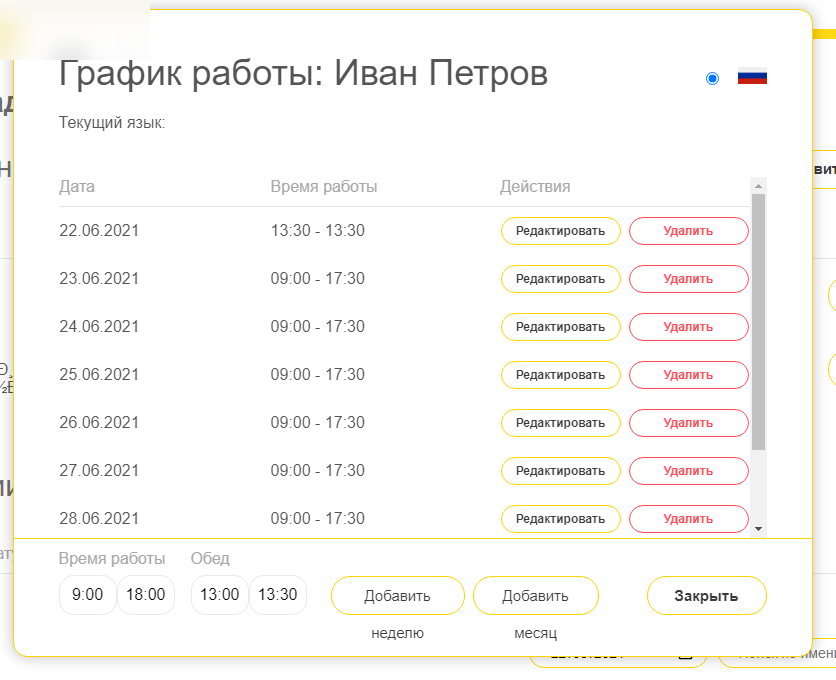
Patient Home Page
Patient Home Page — intuitive interface to browse and book consultations
Main Improvements
- Role-based dashboards with unique functionality for patients, doctors, and admins
- Socket-based real-time updates for booking and slot availability
- Localization-first flow for patient bookings by language, not doctor
- Automated email and SMS notifications via third-party API integration
- Cloud-hosted video consultation interface with secure access
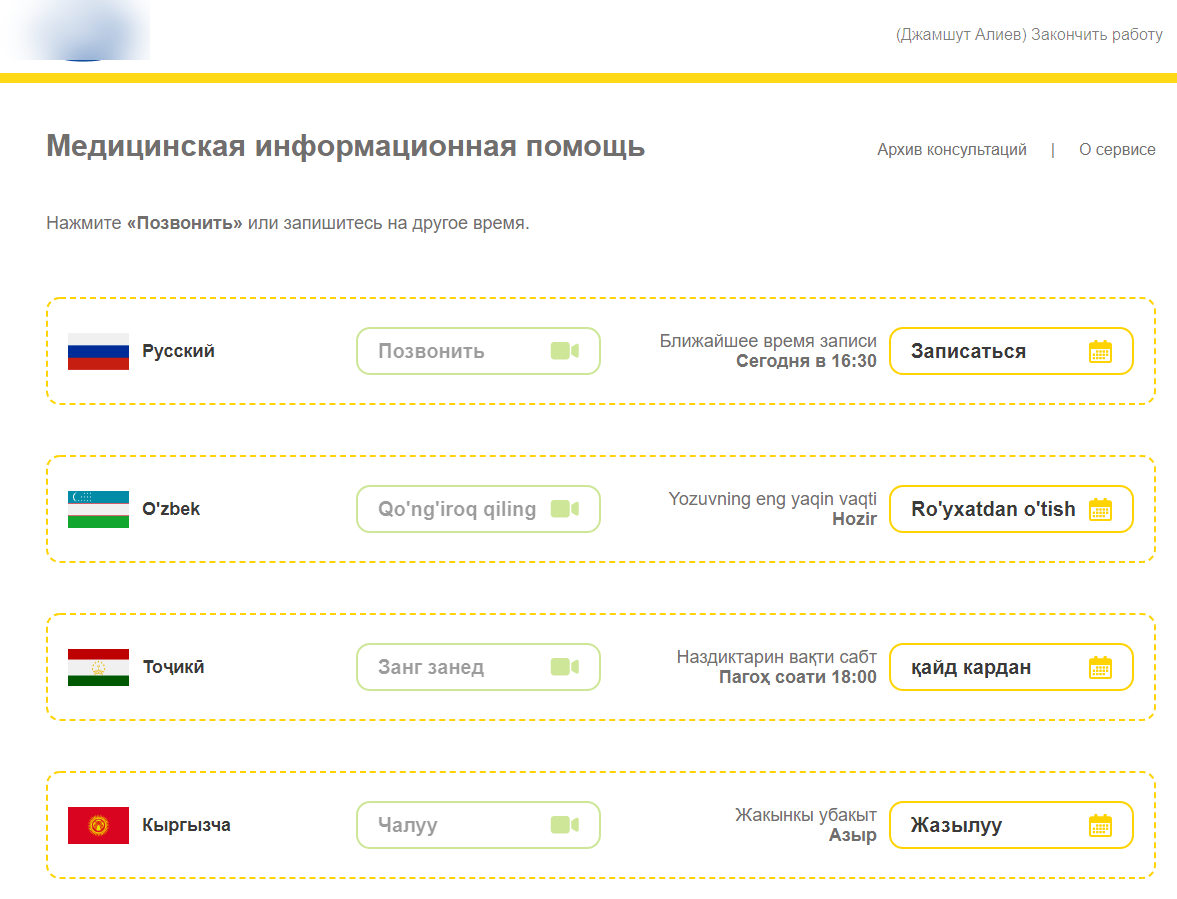
Slot Booking View
Slot Booking View — real-time slot rendering with multi-language support
Tip: Real-time slot visibility is achieved via Firebase Realtime Database, which allows instant booking updates across users without reloads.

Real-Time Communication
Real-Time Communication — architecture built with WebSocket synchronization
Doctors can now easily launch video calls and finalize reports in minutes. Diagnostic reports are generated using pre-configured templates and are securely stored for later access.
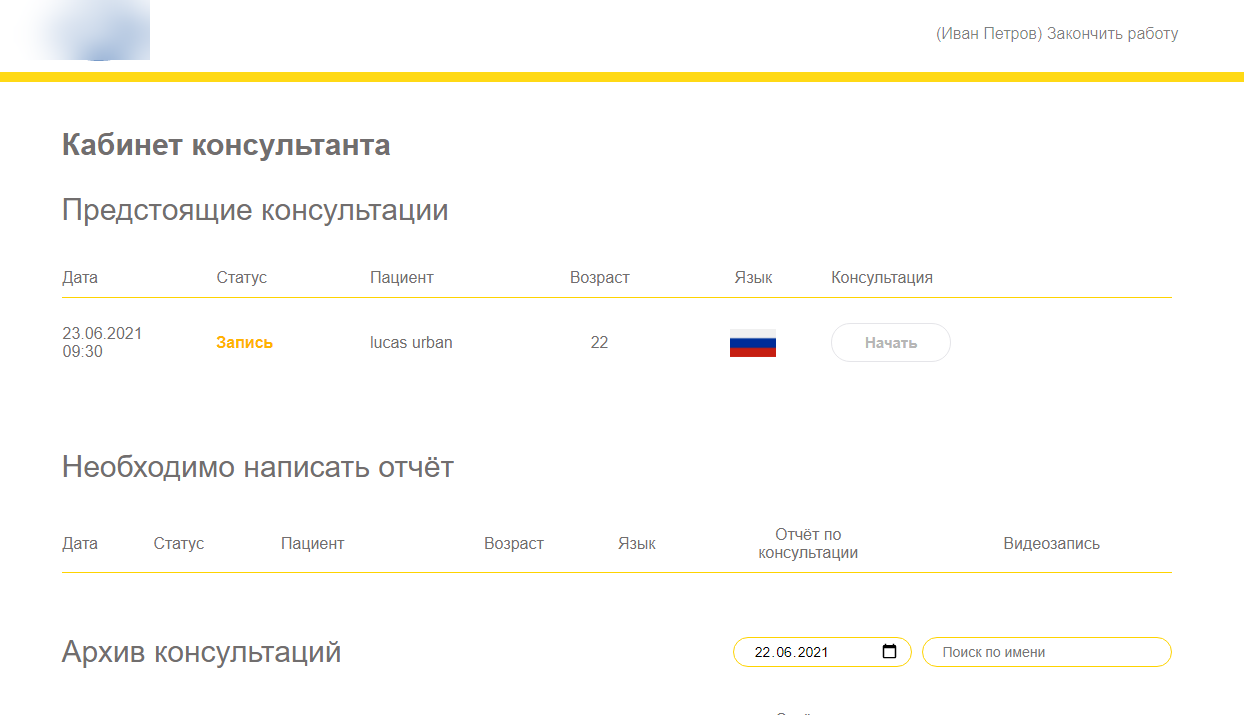
Doctor Interface
Doctor Interface — one-click video consultation launch for active sessions
The diagnostic form now supports dropdowns with predefined values. Although earlier versions showed only IDs, the final release displays human-readable text with multi-language fallback.
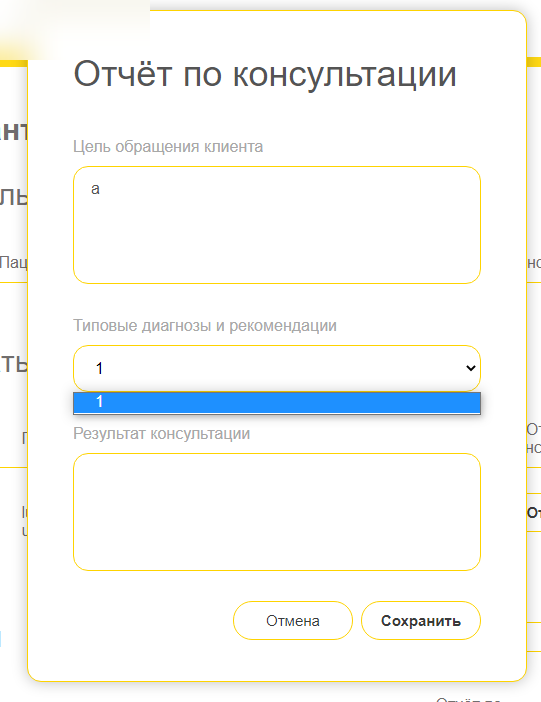
Diagnoses Dropdown
Diagnoses Dropdown — quick-select templates for faster reporting
After a consultation, patients are prompted to rate their experience. Feedback is recorded and tied to each doctor’s profile, closing the loop on quality assurance.
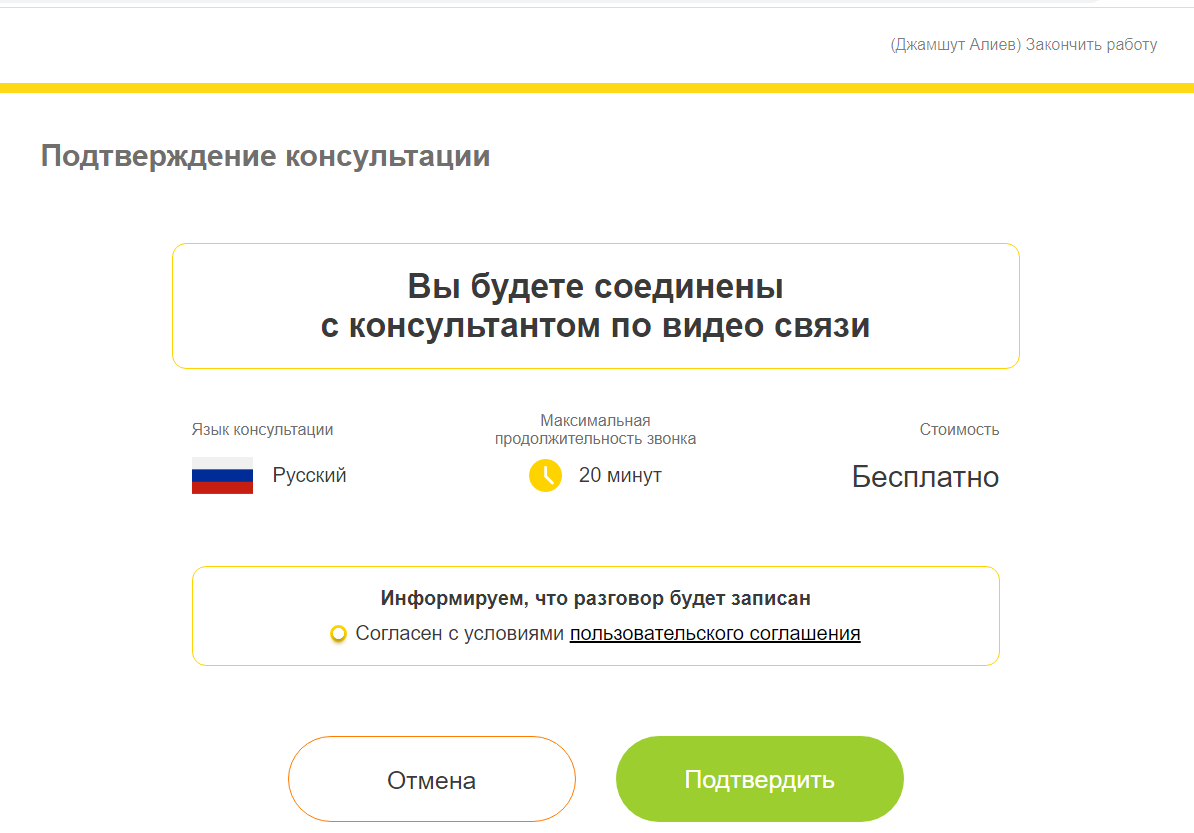
Feedback Interface
Feedback Interface — patients submit ratings after each session
Some features are still evolving, but the core infrastructure is stable, scalable, and meets key telehealth software standards.
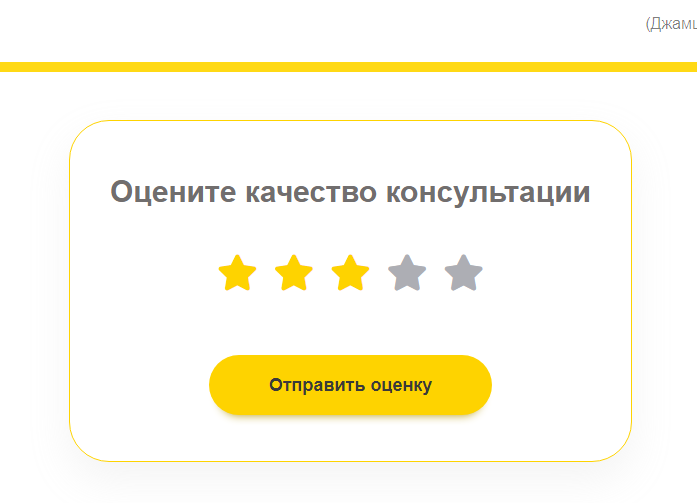
Unknown UI Element
Additional UI Element — functionality subject to future enhancement
Technologies Used
| Service | Purpose |
|---|---|
| TrueConf / OpenVidu | Video conferencing |
| Firebase Realtime DB | Real-time slot updates |
| Yandex Cloud | App hosting infrastructure |
Overall, the platform is now positioned as a reliable and user-friendly telehealth MVP—ready for scaling, partnership integration, and patient onboarding across markets.
Thinking about building a similar system?
Below are the most common questions we hear from clients planning to develop a custom telemedicine or role-based booking system with real-time features, localization, and video conferencing. These answers are based on our experience building similar platforms like the one reviewed above.
A typical MVP for a telemedicine platform can be launched in 8–12 weeks, depending on project scope and how quickly we can clarify requirements. For this project, a clear technical specification and design audit at the beginning helped accelerate development. If you have an existing system, we can reuse or upgrade parts - but often starting fresh is faster and more cost-efficient.
Yes, we can. The reviewed system supported external auth via Unistream and used token-based single sign-on. We’re comfortable integrating with 3rd-party CRMs, user directories (LDAP, OAuth2), or building a custom bridge if required. Just let us know what systems you’re using - we’ll assess feasibility early on.
Absolutely. We built the platform with language-first booking logic, meaning patients choose a consultation language, and the system routes them accordingly. Admins can manage translations via dictionaries. It’s ready to scale across countries with separate branding, domains, or compliance rules if needed.
Real-time functionality - like available slot updates or live notifications - is handled using Firebase Realtime Database or WebSockets, depending on scale and infrastructure preferences. This ensures users don’t need to refresh pages or worry about double-booking. We’ve used this in production and it’s rock solid.
Yes. In this case, we implemented video conferencing using TrueConf and later added OpenVidu for flexibility and recording support. We can integrate similar WebRTC solutions or enterprise video APIs like Twilio, Daily, or Vonage - whatever fits your budget, compliance needs, and country of operation.
That’s common - and we always start by auditing your existing code. In this project, a full rebuild was more efficient than patching broken logic. If you already have something functional, we can reuse certain components (like UI or backend logic), but we’ll recommend the most pragmatic way forward after review.
Admins typically manage users, roles, consultations, reports, and analytics. In this project, the admin panel included slot management, report access, consultation stats, and doctor onboarding. We can also integrate dashboards, export tools, access control, and any internal KPIs your organization needs.